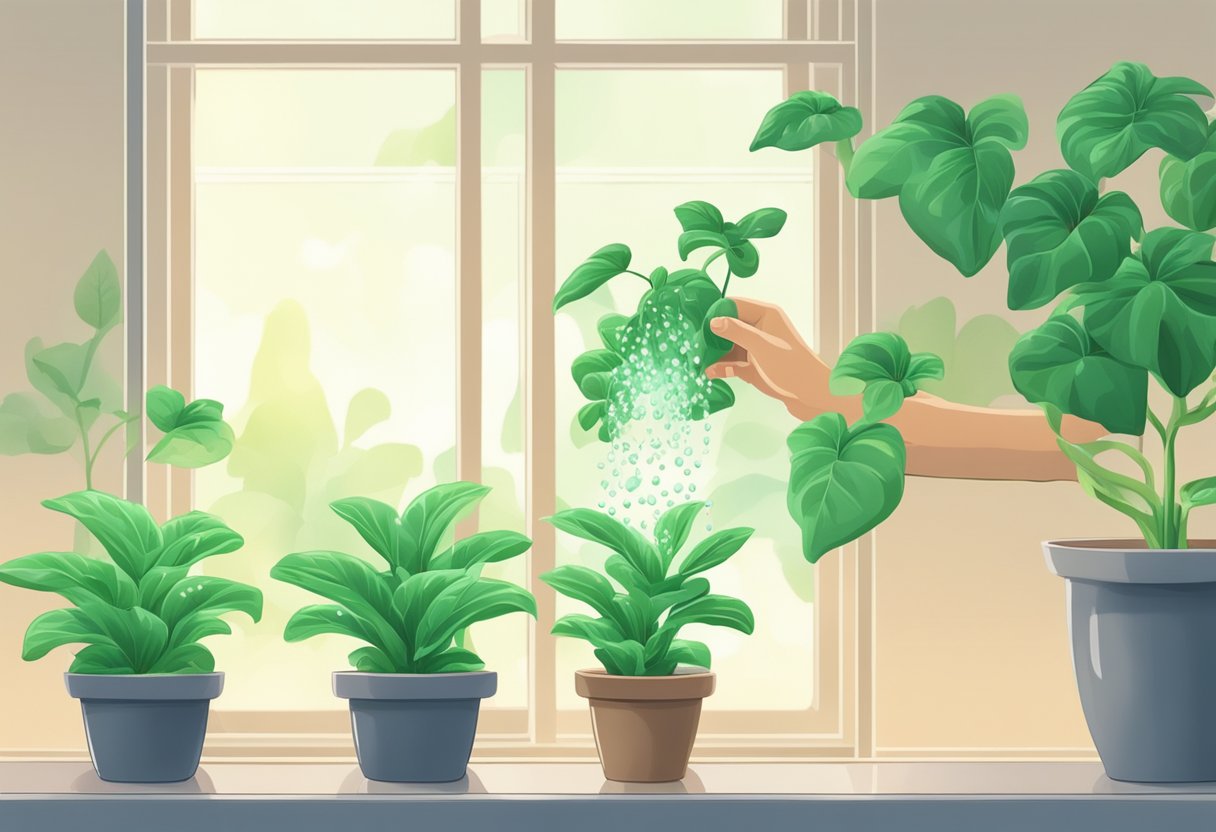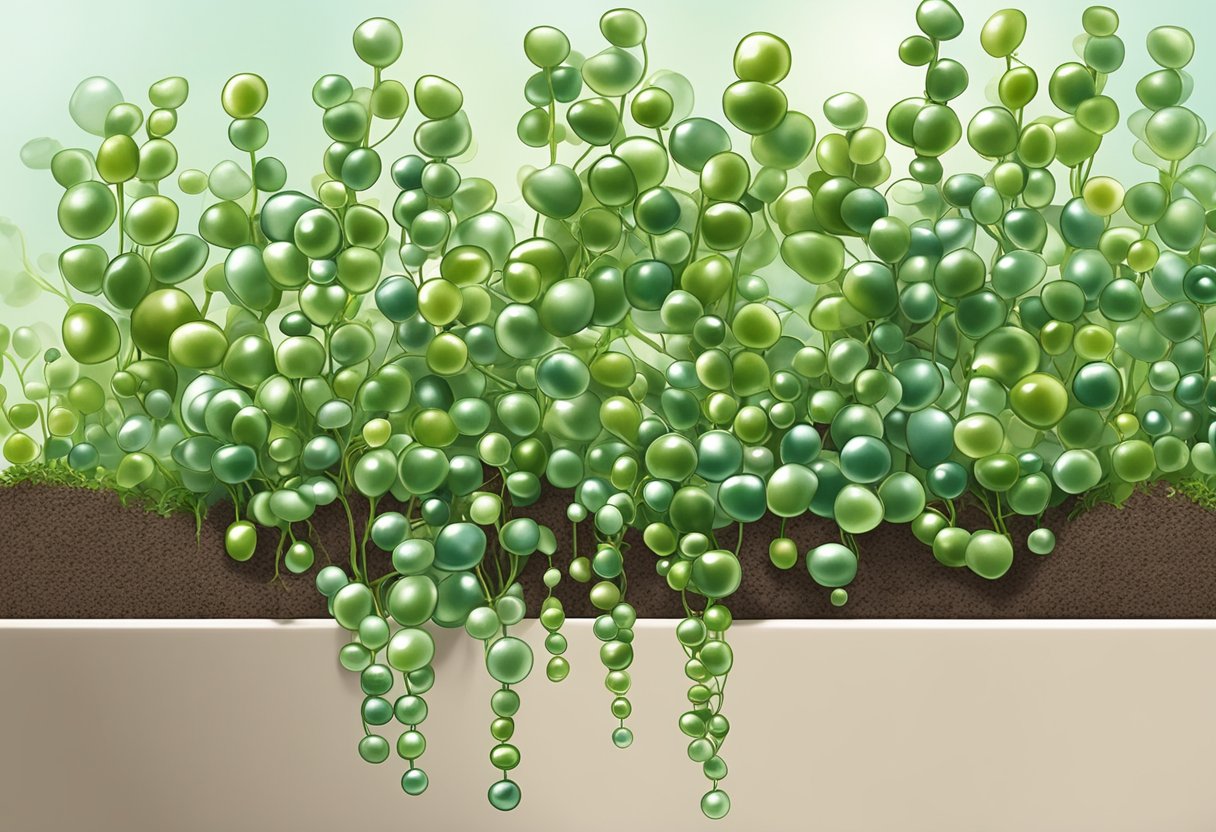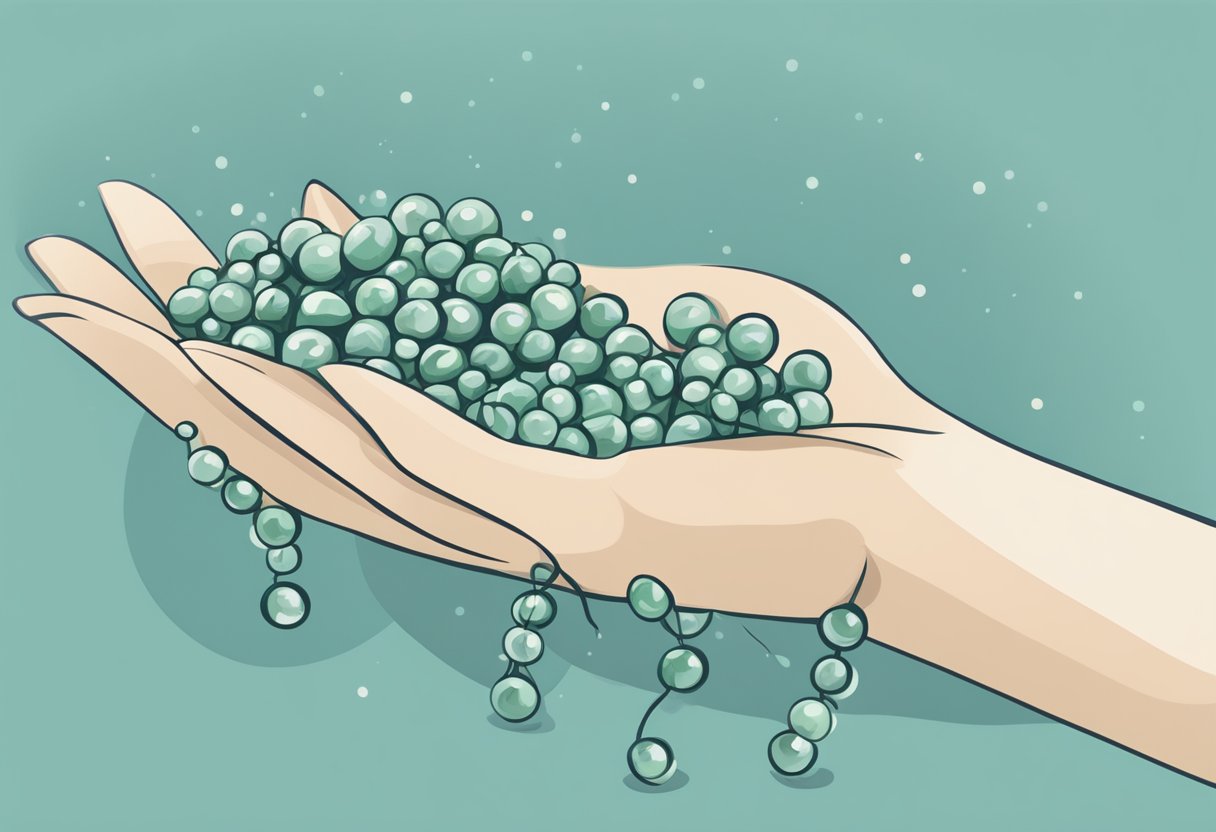String of Pearls Care: Tips for Growing and Maintaining Your Succulent Plant
String of pearls is a unique and visually appealing succulent that has become increasingly popular in recent years. Its long, delicate strands of spherical leaves resemble a string of pearls, hence the name. While it is a relatively low-maintenance plant, proper care is essential to ensure its health and longevity.

One of the most important aspects of string of pearls care is providing the right amount of light. These succulents thrive in bright, indirect light, but direct sunlight can scorch their leaves. It is best to place them near a window that receives filtered light or in a partially shaded outdoor area. Additionally, string of pearls should be protected from extreme temperatures, as they prefer temperatures between 60-85°F.
Another key factor in string of pearls care is watering. These plants are drought-tolerant and can survive long periods without water, but overwatering can quickly lead to root rot. It is important to allow the soil to dry out completely between waterings and to avoid getting water on the leaves, as this can cause them to rot. Using a well-draining soil mix and a pot with drainage holes can also help prevent water buildup.
Understanding String of Pearls

Botanical Profile
String of pearls, also known as Senecio rowleyanus or Curio rowleyanus, is a succulent plant that belongs to the Asteraceae family. This plant is native to southwestern Africa, specifically in the regions of Namibia and South Africa. The plant is often grown as an ornamental plant due to its unique appearance and low maintenance requirements.
The plant is a trailing vine with spherical leaves that resemble pearls. The stems of the plant can grow up to 3 feet long and produce small white flowers during the blooming season. The plant is often grown in hanging baskets or trained to climb trellises, making it a popular choice for indoor and outdoor gardening.
Physical Characteristics
The genus and species name of the string of pearls plant, Senecio rowleyanus, is derived from the Latin word “senex” which means “old man.” This name refers to the plant’s fuzzy white flowers that resemble the beard of an old man. The plant has a unique appearance due to its spherical leaves, which are filled with water-storing cells that allow the plant to survive in arid conditions.
The plant requires well-draining soil and bright, indirect sunlight to thrive. Overwatering can lead to root rot, so it is important to allow the soil to dry out between waterings. The plant can also be propagated easily by taking stem cuttings and rooting them in soil.
In conclusion, understanding the botanical profile and physical characteristics of the string of pearls plant is essential for its care and maintenance. With proper care, this unique and fascinating plant can thrive in both indoor and outdoor settings.
Optimal Growing Conditions

When it comes to growing string of pearls, providing the right growing conditions is crucial for its survival and growth. Here are some optimal growing conditions that you should consider:
Light Requirements
String of pearls prefers bright, indirect light, and it can also tolerate some direct sunlight. East-facing windows are ideal for these plants as they receive bright morning light and are shaded from the intense afternoon sun. If you don’t have an east-facing window, you can also grow them under fluorescent lights.
Watering Guidelines
String of pearls is a succulent plant, which means it stores water in its leaves. Therefore, it is important not to overwater it as it can lead to root rot. Water your string of pearls only when the top inch of soil is dry to the touch. Also, make sure to use a well-draining soil mix and a container with drainage holes to prevent water from accumulating in the pot.
Soil and Potting Needs
String of pearls thrives in well-draining soil that is rich in nutrients. You can use a cactus potting mix or make your own by mixing equal parts of sand, perlite, and regular potting soil. When potting your string of pearls, make sure to use a container that is slightly larger than the root ball to allow room for growth.
Temperature and Humidity
String of pearls prefers warm temperatures between 60-85°F (15-29°C) and low humidity levels. It is important to keep the plant away from cold drafts and to avoid placing it near heating vents or air conditioning units.
Fertilization Practices
String of pearls does not require frequent fertilization, but you can feed it with a water-soluble fertilizer once a month during the growing season (spring and summer). Make sure to dilute the fertilizer to half its strength to avoid burning the plant’s roots.
Propagation Techniques
Using Stem Cuttings
One of the easiest ways to propagate string of pearls is through stem cuttings. To do this, select a healthy stem and use a clean, sharp pair of scissors or pruning shears to cut off a section that is at least 2-3 inches long. Make the cut just below a leaf node, which is where the leaves attach to the stem.
Once you have your cutting, remove the bottom set of leaves, leaving only a few at the top. This will allow the cutting to focus its energy on growing new roots instead of supporting a large number of leaves. If desired, you can dip the cut end in rooting hormone to encourage faster root growth.
Next, plant the cutting in a well-draining soil mixture. You can use a mix of cactus soil and perlite or sand to ensure good drainage. Water the soil lightly and place the cutting in a bright, indirect light. Keep the soil moist but not waterlogged, and within a few weeks, you should start to see new growth.
Planting and Transplanting
When planting or transplanting string of pearls, it’s important to choose a pot with good drainage. The soil should be well-draining and preferably mixed with perlite or sand to help prevent water from pooling around the roots.
To transplant an existing plant, gently remove it from its current pot and carefully loosen the roots. Place it in the new pot and fill in any gaps with fresh soil. Water the plant lightly and place it in a bright, indirect light.
If you’re starting a new plant from a cutting, you can transplant it once it has developed a strong root system. This will typically take 2-3 months. Gently remove the cutting from its pot and plant it in a larger pot with fresh soil. Water lightly and place in bright, indirect light.
Overall, string of pearls is a relatively easy plant to propagate and care for. With proper techniques and care, you can enjoy this unique and beautiful plant for years to come.
Routine Care and Maintenance

Pruning and Trimming
String of Pearls plants require regular pruning and trimming to maintain their shape and size. It is recommended to trim the plant at least once every two months to promote healthy growth and prevent tangling. When pruning, it is important to use sharp, clean shears to avoid damaging the plant.
To prune, simply cut the stem just above a leaf node, or where you would like the plant to branch out. This will encourage new growth and prevent the plant from becoming too leggy. Additionally, trimming the plant regularly will help keep it tidy and prevent it from taking over the space.
Monitoring for Pests and Diseases
Like all plants, String of Pearls is susceptible to pests and diseases. Two common pests that can affect this plant are aphids and mealybugs. Aphids are small, soft-bodied insects that feed on the sap of plants. Mealybugs are small, white, cottony insects that also feed on plant sap.
To prevent and control these pests, regularly inspect the plant for signs of infestation. If aphids or mealybugs are present, they can be removed by spraying the plant with a mixture of water and dish soap, or by wiping the leaves with a cotton swab dipped in rubbing alcohol.
String of Pearls can also be susceptible to root rot if overwatered or if the soil does not drain properly. To prevent this, ensure that the plant is not sitting in standing water and that the soil is well-draining.
By following these routine care and maintenance tips, your String of Pearls plant will thrive and bring joy to your space for years to come.
Special Considerations

Toxicity Information
While string of pearls (Senecio rowleyanus) is an attractive and unique houseplant, it is important to note that it is toxic to both humans and pets if ingested. The plant contains toxins that can cause vomiting, diarrhea, and other gastrointestinal issues. Therefore, it is important to keep the plant out of reach of children and pets. If ingested, seek medical attention immediately.
Decorative Uses and Display
String of pearls is a popular indoor plant that is often grown in hanging baskets due to its trailing habit. When selecting a location for your plant, keep in mind that it prefers bright, indirect light and well-draining soil. It is also important to avoid overwatering, as the plant is susceptible to root rot.
In addition to its decorative uses, string of pearls can also be used in unique ways. The plant’s trailing habit makes it a great addition to living walls or terrariums. It can also be used to create a “string of pearls” effect when draped over other plants or objects.
Overall, string of pearls is a beautiful and unique houseplant that requires special considerations when it comes to toxicity and care. By following the proper care guidelines and taking precautions to keep the plant out of reach of children and pets, you can enjoy its beauty and unique trailing habit in your home.
Common Issues and Solutions
Dealing with Root Rot
Root rot is a common issue that can affect string of pearls plants. It is caused by overwatering or poor drainage, which leads to the roots becoming waterlogged and unable to absorb oxygen. Symptoms of root rot include yellowing leaves, wilting, and a foul odor coming from the soil.
To prevent root rot, it is important to ensure that the plant is not overwatered and that the soil has good drainage. If root rot is already present, it is necessary to remove the affected parts of the plant and repot it in fresh soil with better drainage. It is also important to reduce watering frequency and allow the soil to dry out between waterings.
Preventing Sunburn and Drafts
String of pearls plants are sensitive to direct sunlight and drafts. Direct sunlight can cause the leaves to burn and turn brown, while drafts can cause the leaves to dry out and fall off. To prevent sunburn and drafts, it is important to place the plant in a location with bright, indirect sunlight and away from any drafts.
Adjusting Watering to Prevent Overwatering
Overwatering can lead to root rot and other issues with string of pearls plants. To prevent overwatering, it is important to adjust watering frequency based on the plant’s needs. The soil should be allowed to dry out between waterings, and any excess water should be drained from the pot. It is also important to avoid getting water on the leaves, as this can cause them to rot.
Overall, by following these tips, string of pearls plants can thrive and remain healthy for years to come.
Frequently Asked Questions

What type of soil is best for a String of Pearls plant?
String of Pearls plants prefer well-draining soil with a mixture of perlite, sand, and peat moss. A cactus or succulent soil mix is a great option as it provides the necessary drainage and aeration required for the plant’s root system.
How frequently should a String of Pearls be watered?
String of Pearls plants are succulents and do not require frequent watering. Watering should be done when the soil is completely dry. Overwatering can lead to root rot, so it is important to be cautious and avoid leaving the plant in standing water.
Is direct sunlight necessary for the health of a String of Pearls?
String of Pearls plants prefer bright, indirect light. Direct sunlight can cause the leaves to burn and turn yellow. However, some direct morning sunlight can be beneficial for the plant’s growth.
What are the humidity requirements for a String of Pearls plant?
String of Pearls plants do not require high humidity levels and can tolerate dry air. However, misting the plant occasionally can help to increase humidity levels and prevent the leaves from drying out.
How can you successfully repot a String of Pearls?
Repotting a String of Pearls should be done in the spring or summer months when the plant is actively growing. Use a well-draining soil mix and choose a pot that is slightly larger than the current one. Carefully remove the plant from its current pot and gently loosen the roots before placing it in the new pot. Water sparingly after repotting.
What are the signs that a String of Pearls is flowering?
String of Pearls plants produce small, white, star-shaped flowers in the summer months. The flowers are typically located at the base of the plant and are accompanied by a sweet fragrance. When the flowers begin to fade, they should be removed to encourage new growth.
